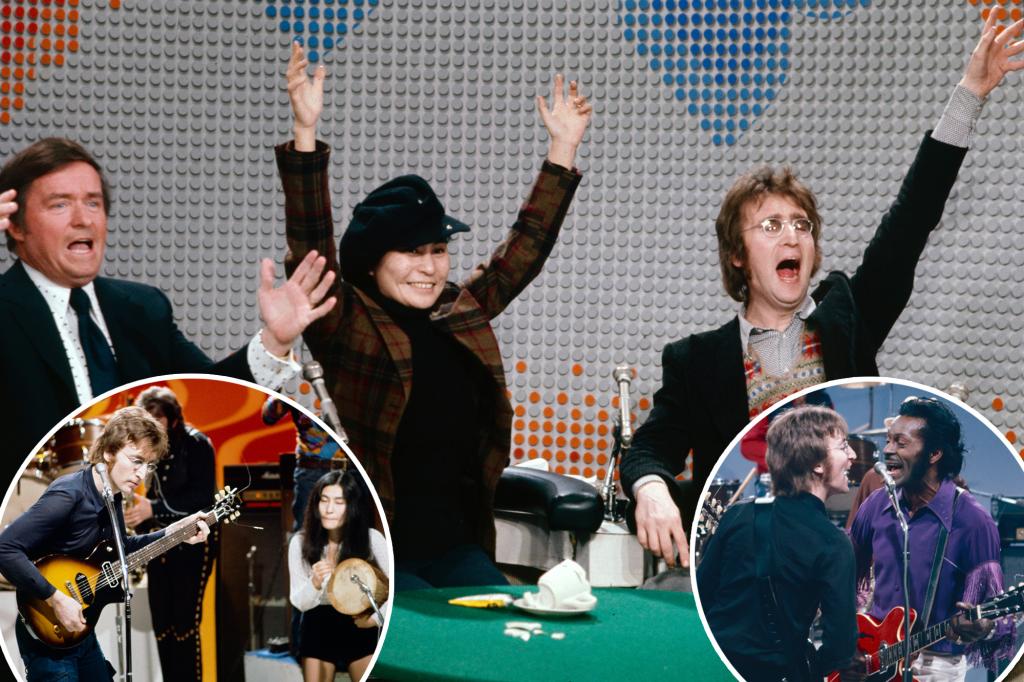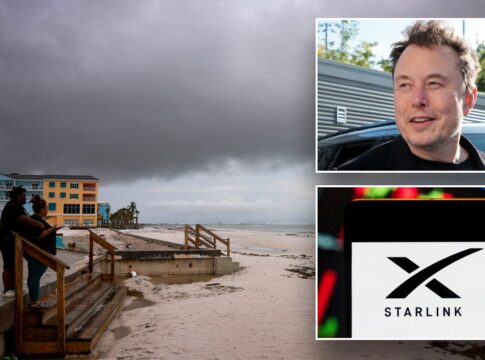Imagine John Lennon and Yoko Ono co-hosting a daytime talk show for a week — a veritable Kelly Ripa and Mark Consuelos.
That’s exactly what happened 52 years ago when the erstwhile Beatle and his wife brought peace, love and counterculture to Middle America on “The Mike Douglas Show.”
Just months after “Imagination” was released, that radical week — with five shows airing Feb. 14-18, 1972 — saw Lennon and Ono chatting up guests that they had selected to spread their utopian vision in the final years of the Vietnam War.
It’s a memorable moment in time that is revisited in the new documentary “Daytime Revolution” playing in theaters on Wednesday, which would have been Lennon’s 84th birthday. (The film will continue its run at New York’s Quad Cinemas through Oct. 17 before its DVD/Blu-ray release on Nov. 26.)
“The idea that this insane cavalcade of radical politics and radical music could find a safe harbor on a mainstream American talk show with a host so willing to meet the craziness halfway was really the point of making the movie,” director Erik Nelson told The Post.
“John and Yoko wanted to reach Middle America. They wanted to communicate this optimistic message … It really was peace, love and all that stuff.”
With that message in mind for the week, guests included everyone from consumer advocate Ralph Nader, Black Panther Party chairman Bobby Seale and Yippies activist Jerry Rubin to rock pioneer Chuck Berry, comedian George Carlin and avant-garde musician David Rosenboom — who hooks Lennon and Ono up to electrodes to improvise on his keyboard from their brainwaves.
There’s even a macrobiotic chef, Hilary Redleaf, who leads a cooking segment, and a medical discussion with biofeedback researcher Dr. Gary Schwartz about the power of the mind to control one’s blood pressure. Not your usual daytime talk-show fodder.
“The way it worked with the co-hosts on ‘The Mike Douglas Show’ was we asked them to suggest guests,” said E.V. Di Massa, an associate producer on the show at the time who is interviewed during the film. “So we gave them the opportunity to tell us who they’d like to have on the show.”
Di Massa said that there are several different theories about how Lennon and Ono were booked to co-host the show.
“Honestly, we don’t really know how it happened,” he said. “But I can tell you this: Yoko was 100 percent gung ho to do it, and so was John … Yoko, being a conceptual art person, saw ‘The Mike Douglas Show’ as a conceptual art project.”
With the show tapings taking place over five weeks on Thursday nights, Lennon and Ono would take a limo from New York’s Greenwich Village — where they were living at the time — to Philadelphia to tape the episodes in a basement studio.
“All the guests came down from New York … which is where it was happening in 1972,” said Nelson. “So in some ways, these shows are a celebration of New York radical culture in 1972.”
Despite their own agenda, Lennon and Ono met Douglas and his show in the middle. “It’s John Lennon and Yoko Ono who kind of tidied, cleaned up their act for mainstream television,” said Nelson. “And you had Mike Douglas and his team trust that John and Yoko were going to play nice.”
Basically, Nelson put it this way: “Mike invited John and Yoko into his living room, and was hoping they wouldn’t spill any wine on the carpet.”
Still, there wasn’t always peace on the set.
“I was kind of the young one on the staff, and I was sort of the one that they sent in to talk to Yoko …because they were all scared to death of her,” recalled Di Massa. “Whenever Yoko wanted something or wanted to change something on the show, other producers didn’t really know how to have a conversation with her.”
Also giving peace a chance was Lennon. “John was wonderful and quite often would intervene if Yoko wanted something that was not something the producers wanted to do,” said Di Massa. “He would sort of play Henry Kissinger.”
Lennon — who, wearing a Boston Red Sox jersey, sang “Imagine” at the piano in the fourth episode — grew increasingly comfortable in his co-host chair over the five episodes.
“By the end of the shows, he’s doing an impression of Groucho Marx,” said Di Massa. “This is John Lennon, and you can just see him loosening up and having fun. It was really a wonderful experience.”



